Coatepantli (Wall of Snakes) |
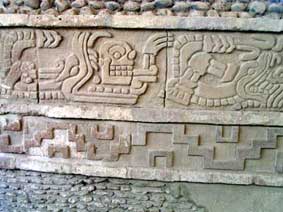 |
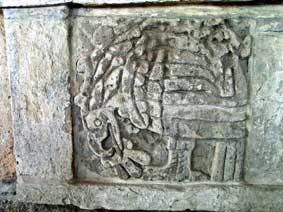 |
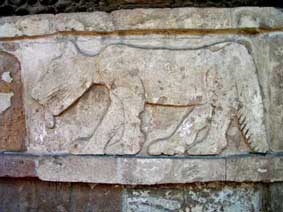 |
Along the side of Pyramid B, the "Wall of Snakes" features human skulls in the open mouths of serpents (above left); eagles eating bleeding human hearts (center), plus panthers and other cats, likewise with bloody mouths (right). These images, all of which refer to human sacrifice, symbolize Toltec warrior cults. Atlantean Figures
The temple, most likely to Quetzalcoatl, that capped Pyramid B consisted of two rooms. The roof of the foremost room was supported by four atlantean figures. ("Atlantean," in this case, has nothing to do with the mythical city of Atlantis; it refers to the Greek god, Atlas, whom Zeus forced to support the heavens.) It goes without saying that both the pyramid and the atlantean colossi have been reconstructed. |
 |
These warriors, composed of four blocks of stone piled one on the other, stand 15 feet tall. They carry in their hands (carved on the sides of the figures) an atlatl and an incense pouch. On their chests is the Toltec emblem, a stylized butterfly, and on their backs a circular emblem containing in its center a head with features very similar to those of the colossal Olmec heads from centuries before. |
 |
 |
View from the Top Virtually all of Ceremonial Tula is Visible from the Top of Pyramid B |
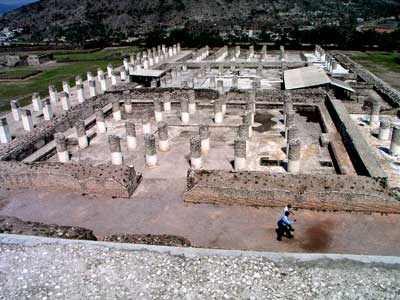 Quemado Palace |
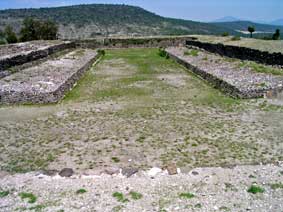 Ball Court |
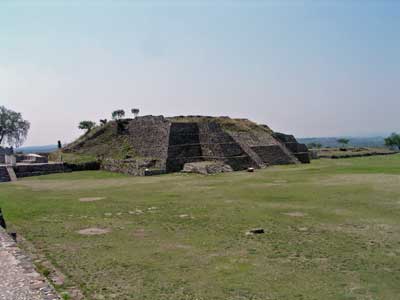 Pyramid C |
| Tula was a great and powerful city. At its height as many as 40,000 people lived in its 5.4 square miles. Its army was magnificent and fearsome. Under its bloody deity, Tezcatlipoca, its military diplomats spread Toltec culture far and wide, exerting influence on the Maya (e.g., Chich'en Itza) to the south and (some say) the Chaco culture to the north. But its end was to come by invasion and fire. The city was sacked and by 1150 lay in ruins. Later Aztecs added to its destruction in their search for relics of the great warriors to add to their own prestige. The end of an American Empire. |